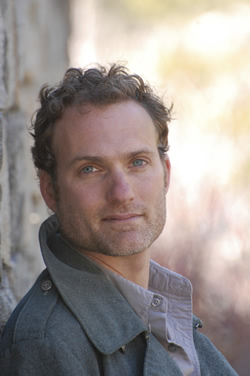|
I was halfway through the second draft of my novel when one of the main characters reached back, beneath his jacket, and drew out a gun. My fingers froze over the keyboard. He was surrounded by armed men who had threatened to kill his brother and would be as quick to kill him; I hadn't planned such a rash move. You didn't just do that, I thought. But he had. I got up, went for a run, tried to decipher whether I'd just taken a wrong turn—and by the time I was back knew that he'd guided me, instead, toward what was right.
How did I know? First, I'd already sown the seeds: a background that made this moment inevitable, built a character who could do no differently. Second, when the crop came up it was already in its right row: working the gun into events before and after, I found that it simply fit, slotted straight into the plot.
You probably know Chekhov's old chestnut: If you're going to bring a gun into a story, you'd better fire it before the end. The master of the short form meant it as an admonition to make sure what's on the page is needed and used, but, since I'm drawn to longer forms and write toward a story already taking shape, I've inverted the advice: If you're going to fire a gun at the end, you'd better bring it in near the beginning. In other words, sow your seeds and plant your rows.
If Yarik drawing that pistol was going to mean more than simple action, I had to thread that gun through from start to finish. In the final draft of The Great Glass Sea, it's in the first scene, and many others throughout, and is central to the novel's climax. Because the gun has been built in earlier, the role it plays in that moment carries much more weight than just its metal.
It has become a symbol and symbols take on meaning through repeated use. My first mentor, a playwright, taught that every important object should appear at least once each act—his students would chart this in our own scripts, something I still do with my fiction—so that, by the end, meaning has accrued. But there's more to it than that. If a symbol isn't going to feel like it's there to be a symbol (and it shouldn't), then it needs to be necessary to the story, to arise naturally out of the plot. This means that it needs to do double duty. In the opening scene of The Great Glass Sea, two boys bring a pistol out onto a lake in the hope of hunting a mythic beast they believe killed their father. At that point it's just a pistol. Later, when their uncle uses the same gun to commit suicide, it takes on added meaning. By the time Yarik draws it from his pants waist halfway through the book, it's imbued with import. The symbol, developed over many pages, is meaningful, but the object is integral to the specific scene, organic to the moment because it's been planted before it's needed. Too often I see this mistake in students' work: an element introduced only as it's needed unmasks authorial intent, reveals itself as a device. I tell my students to introduce it before it's needed, plant it at the start, look for a place where that element would help another aspect of the story earlier on and set it there.
Straightforward enough, but it gets more complicated—and more vital—when, instead of objects, we're dealing with development of character. When a character does something (say, suddenly draws a gun out of his pants waist) that action must be supported by actions that have come before; the mentality that causes it needs to be developed before the action happens. Long before. If Yarik is drawing his gun because he feels responsibility for his brother's life, then I must make that felt before I need him to feel it. That way the action is immediately understood without my having to explain it after, or prep it right before. Allude to the emotional or intellectual reason for an action just before it happens and the reader will feel the author constructing the moment instead of experiencing the moment as real. For me, for this moment, that meant figuring out not only that Yarik felt a sense of responsibility for his brother, but also finding moments before this scene where that could be revealed. I had to sow the emotion in early so that by the time it reached a point where it would drive his action it had already taken root in the soil of the story.
After all, we are farmers, our stories are fields, each piece of them a single plant. They need deep roots and time to grow. So, at the end, when we walk out with our scythes and spades, or fire up the combine, the harvest will be ripe and rich. Even if it's bullets instead of berries, if the windbreak's whistling is smothered by a gunshot's boom.
|


